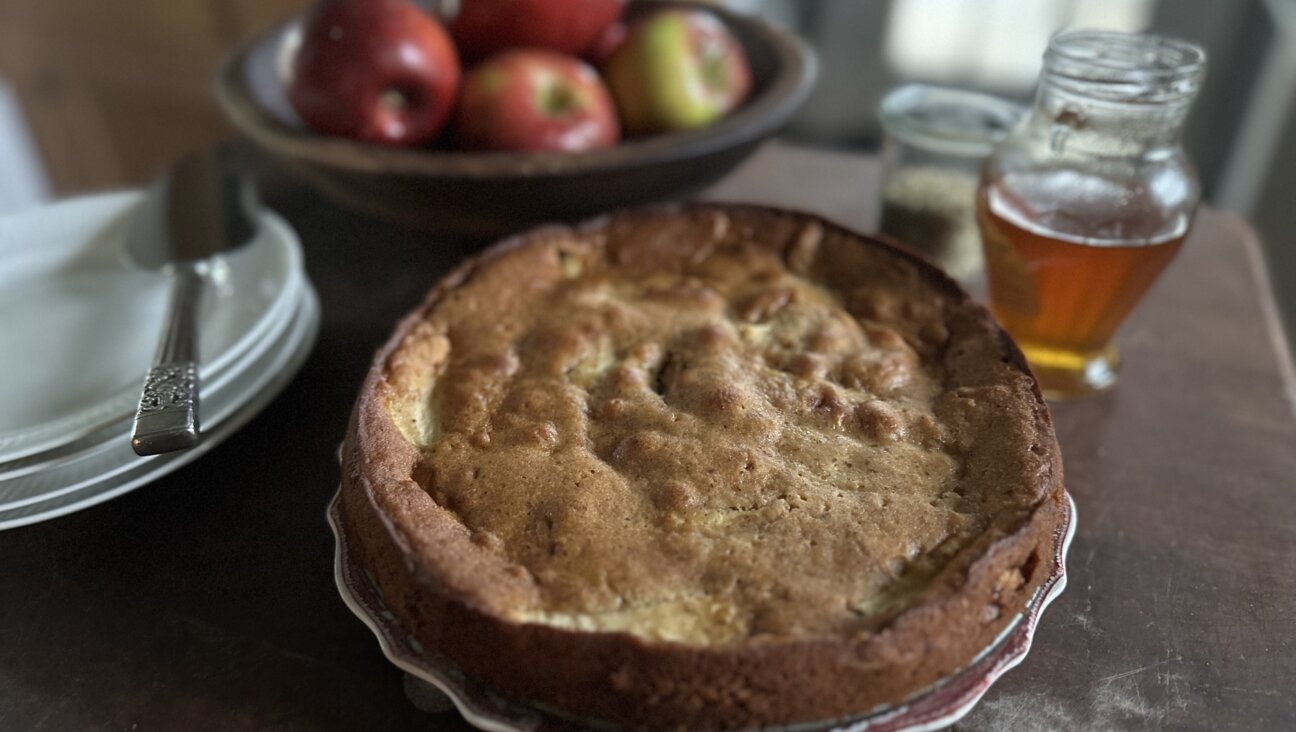‘I take stock as well as make stock’: Readers share soup stories (and recipes)

More soup filling the freezer, ready for heating. Photo by Merrill Silver

A reader’s freezer stocked full of soup for the winter. Photo by Merrill Silver
Soup is one of those universal things: every culture has its own versions, every family its own recipes, every person their own memories and rituals.
Our editor-in-chief, Jodi Rudoren, recently wrote about how she brings homemade quarts to friends stricken with coronavirus. Making soup, she noted, is a lot easier than making New Year’s resolutions, especially in this uncertain time of Omicron. Easier to keep, too: she had just ordered two dozen plastic containers that can go into both freezer and microwave.
And the simple acts of stirring a pot and dropping a package on a doorstep seemed like a metaphor for our endless pandemic moment.
“We have learned how to maintain connections even in our isolation,” Rudoren wrote. “We appreciate the little things — warmth, seasoning, generosity — a little more than we used to. We don’t know what’s next — but at least we know in a deep way that we can’t know — and meanwhile, maybe a mug of lentil soup will make us feel a bit better about the now.” Readers responded with an outpouring of soup stories. Of coming home after school to the smell of chicken noodle on the stove. Of not letting children leave home before mastering a lentil recipe. Of slow-cookers and Instant Pots, hospitals and home kitchens, rabbis and grandmothers.
Here are some highlights:
My first (COVID-positive) quarantine, months ago, in the first part of what I hoped would be the middle of this pandemic, was a doozy. The hospital staff — those that weren’t sick themselves — were farblunget and somehow lost my dinner.
I was with a visitor. It was my initial encounter with a young Chabad rabbi who was making his rounds looking for landsmen to schmooze with. Seeing the disappearing-dinner problem, he excused himself, saying that he would be back in a few moments, and rushed out.
He came back, carrying a large container –- of chicken soup! The rabbi was crestfallen, however. He did not have the matzo balls!
The soup was magnificent, even without the magic ingredient, and we then spent another hour getting to know each other. As the rabbi was leaving, he nearly bumped into my wife, who had just arrived. A package she was carrying almost fell from her hands. Guess what: It was a huge glass jar of chicken soup, but with her delightful matzo balls.
—Howard Ball
I, too, just bought a couple dozen of the same plastic containers for my soup! In my case, it was for storing my homemade chicken stock – the slow, meditative activity I go to when I need to settle my emotions; I take stock as well as make stock.
I will use some of my stock for our favorite soup, a sort of caldo verde, but I replace the potatoes with beans.
Bean and Kale Soup
2 T. olive oil
Lots of garlic, minced (anywhere from 2 to 10 cloves, depending on your tolerance)
½ of a large onion, chopped
½ of a bunch of kale, chopped (about 3 to 5 handfuls after chopping into bite-sized bits)
4 to 5 cups of chicken stock, depending on how soupy you want it
2 15-oz. cans of beans, rinsed (whatever kind you like; we usually like 1 ceci and 1 navy bean)
2 chorizos (4 inches each), sliced into bite-sized pieces
8 oz. can of tomato sauce (or you could use a can of diced tomatoes or fresh chopped)
1 t. oregano
1 t. basil
Salt and pepper to taste
Tabasco, sriracha, or other pepper sauce to taste
In your big pot, heat the oil and sauté onion and garlic until softened. Add kale and a little broth and wilt the kale while stirring to prevent burning. Add the rest of the broth, the beans, and everything else and simmer for 10 or 15 minutes. Taste to adjust the flavors and serve.
—Llyn Kaimowitz
In my head is a recipe for chicken soup. It’s not on paper, it never was, and it’s not even a recipe. It’s a distillation of many ancient recipes.
When I was first teaching myself to cook, I wrote all recipes down neatly on colored index cards: yellow for soups, green for salads, blue for main dishes. In my inexperience, even the simplest dishes requiring just three or four ingredients merited a card, each card a sturdy crutch.
But chicken soup, which requires a fairly long list of ingredients, never got the yellow soup card. And I rarely cooked it.
That simple, nourishing broth of fowl and vegetables was fraught with a long and sad history. It conjured images of grandmothers, great grandmothers, and great-great grandmothers, a huge horde of exhausted women shuffling on swollen legs, patiently peeling onions, their tears dripping over the glistening halves, their hands sore from tearing feathers off skinny chickens, their arms pained from lifting the great vats of soup for their large, always hungry families in Europe’s shtetls.
Chicken soup was also the deepest expression of my mother’s hunger in Auschwitz. “I used to dream of Friday nights, of the warm, white challah and the golden chicken soup, as clear as a mountain lake, the broth unsullied by turbulence or flotsam, and everything laid out on a white cloth,” she used to tell me.
It was her impoverished family’s one satisfying meal of the week, a vision of family, plenty and love that sustained and nourished in the most horrific times.
Get the Forward delivered to your inbox. Sign up here to receive our essential morning briefing of American Jewish news and conversation, the afternoon’s top headlines and best reads, and a weekly letter from our editor-in-chief.
But to me, these visions were a crushing weight. They paralyzed my hands and hardened my heart against my ancient mothers, who crowded behind me in a long, diminishing line, their breath reeking of herring and onions, their shapeless black dresses of stale, indoor air. Their thin, patient voices wrapped themselves around me like wisps of smoke, insinuating themselves into my throat, choking off my future as a new kind of woman, so different and so privileged that I couldn’t possibly be a link in that sad chain.
But later, when my children had colds, I made them chicken soup. The method seemed hardwired into my very genes, and the soup was always excellent. My children loved it and I started cooking the soup when they were not sick. With a growing family, it fell to me to have everyone over for holidays, and I made chicken soup. Today, when bringing food to a potluck with friends, I’m always asked to bring my chicken soup.
So I stand in my gleaming kitchen, the large windows blowing woodsy air throughout. My legs are strong and my arms lean from regular exercise. I am spilling tears into the accumulating onion skins. They and my tears will go into the compost bin, to create rich new soil, for new things to grow.
One form of energy always turns into another; plant into earth, earth into plant, plant into soup. Nothing is or can ever be lost. It’s a law of physics, and of history.
—Martha L. Molnar
My mother was the “Jello-mold Lady” and I am the “Soup Maven.” I can probably make an alphabetical inventory of all my recipes – from Armenian Lentil and Bolivian Quinoa Peanut to Sweet Potato Apricot with Curry, Tuscan Bean and Vegetable Soup (which would require its own separate list.)
How do I love making soup? Let me count the ways. I love the aroma that permeates from the kitchen to the attic, the imprecise and forgiving measurements, the flexibility of ingredients, and the colors of the final products. The brightness of the beets and the autumnal colors of a squash soup belong on an artist’s palette. On a practical level, freeze the soup in small or large portions and enjoy them any time.
Count on me to deliver soup for a potluck dinner, part of a shiva meal, to a friend who just came home from the hospital or is just feeling down, or to the parents of a new baby. Maybe the soup is for me and my family.
Whether it stays in my house or is delivered to a friend, a bowl of homemade soup is like a Valentine any day of the year.
—Merrill Silver

More soup filling the freezer, ready for heating. Photo by Merrill Silver
Sometimes when I make soup, it ends up being stew — good nevertheless. I don’t necessarily follow a specific recipe. After all, it’s soup — start with onions and garlic, add whatever your heart desires along with enough water, and other seasonings, and voilà — soup!
On Jan. 2, I went out with a friend to one of our favorite restaurants that’s currently serving outside, so it was a little chilly (they did provide heat). Their soup that day was ‘vegetable,’ which I thought sounded boring, but I wanted soup, so I ordered it. Well, it could have been my grandmother’s soup! It was just perfect (had a little split pea, just enough for the flavor — and carrots and zucchini). My friend had it too; it made our day.
—Sue Levin
Marcia Linder makes the best chicken soup.
The basis is kosher soup chicken, all parts. We use reverse osmosis filtered water for the first stewing.
All meat is removed from the fluid stock after a day of cooking in a hot pot. The broth has absorbed flavors of vegetables. The usual are carrots, parsnips, onions and celery. Pacific chicken bullion is added to keep up the volume after two days of simmering in a stock pot. I have never been the cook, so only she can tell what spices she throws in. Clearly, there are whole herbs. Little sprigs of parsley and others.
All fat is skimmed off the top on the third day, which is spent in the refrigerator. The meat becomes chicken salad.
Upon savoring, the soup is so rich in essential chicken flavor, it is impossible to find pleasure in eating anyone else’s rendition of chicken soup. We are often served a consommé of lightly chicken-flavored water.
The richness compares in body and flavor to a good bouillabaisse, beef stew or the best versions of cholent. Except this is the essence, with no bulk. This has no sugar, minimal salt or none, no globules of fat (emulsified particles may go undetected, but not much).
My weekend often seems to include inwardly crying a bit when I take our guests’ bowls to the sink for washing. Some dainty eaters leave some soup in their bowls. However much I would like to finish their leftovers, I don’t.
—Owen Linder
A few years after my grandfather died, my maternal grandmother moved in with us. (I think I was in middle school at the time.) From then on, every Friday afternoon, I would be welcomed home after school to the wonderful aroma of a fresh pot of my grandmother’s chicken soup bubbling on the stove. It was heavenly, but that was just the beginning.
After taking off our coats and putting down our books, my younger sister and I (and any friends who were lucky enough to join us that day) would run into the kitchen to say hi to Grandma and get ready for the full show. Grandma would give us soup-scented hugs and then point us to the gribenes (chicken skin and onion cracklings) sitting on the counter waiting for us to devour. Then we’d sit at the far end of the kitchen table and watch Grandma make fresh noodles for the soup.
She had a large wooden bowl for mixing the dough and, when she deemed it was ready, she’d throw it on to a wooden cutting board and use a rolling pin to get it to the thickness she wanted. She then would roll it up and we’d all get ready for the finale. With a large, sharp knife, she would begin cutting the rolled dough into thin noodles for the soup, very fast. It really was a beautiful thing to watch.
In high school, my best friend, Ellen, loved to drive me home on Friday after school so she could stay and watch the show. She still talks about it (more than 55 years later) and always talks about the miracle of Grandma’s cigarettes.
Grandma smoked throughout this whole process (it was the 1960s) and Ellen was enthralled by the ashes at the end of the cigarette. The ashes would get dangerously long and shaky but, as Ellen will attest, they never dropped into the noodle dough. It looked like Grandma was ignoring them, but she always managed to drop the ashes into an ashtray or the kitchen sink before they fell on their own.
—Martha D. Levy
I’m a huge soup lover and often share what I make (usually along with bread that I also make) with neighbors and relatives. Lentil is a huge favorite, something my mother often made when we were kids.
Hers usually included a beef marrow bone, something she also added to split pea and barley soups. This evening, I made a vegetarian French lentil version for one of my brothers who is trying to cut back on animal protein to help save his one remaining kidney.
I blog about food — frequently Jewish dishes — on Substack. My latest post was about making some tortilla soup in an Instant Pot when my gas was shut off due to a gas leak. Here’s a link to the piece.
—Ruth Stroud
I am facing neck surgery. I’ve made Butternut Squash, Mushroom and Italian Beef Barley Soups so far, taking care of myself pre-surgery. Tomorrow, I’ll make Chicken Soup. Because my surgery involves moving the esophagus, I may have trouble swallowing. Soups will do the trick.
—Janet Frisch
My children were only fit to leave home when they had learned my lentil soup recipe, on which on can live. Cheaply.
I remember being criticized by a relative when my mother was really ill with shingles and I brought her a big pot of a beef/vegetable soup instead of — what? I don’t know.
My husband just came home from a sudden visit to Mount Sinai Hospital for heart-stent surgery. Home after four days! Rather amazing — what was waiting for him was a big bowl of homemade chicken soup with tortellini. That soup went down pretty fast!
—Styra Avins Eisinger
“Jewish Penicillin,” or chicken soup, was in fact once objectively tested in a scientific study.
In the respiratory epithelium, the cells constituting the inner lining of our airway, trachea, bronchi, and lungs contain small microscopic projections, called “cilia,” like little hairs, that beat upward toward the nose and mouth, to clear the lungs of unwanted secretions and foreign material. One of our natural defense mechanisms.
Some scientists examined the beating of these cilia, and found that after eating chicken soup, the cilia beat much faster. No, our Bubbie’s lentil soup has not been similarly tested.
—Malin Dollinger, M.D.
I’m a chem-lab cook: I gather the exact ingredients and follow recipes with measuring spoons. But during COVID in Alaska, I wanted the warmth of soup – and no matter what I had in the refrigerator, I could do that.
It was so bold and daring to mix and match! In the middle of hunkering down, I could make soup and grow creatively. I hadn’t expected that.
—Barbara Brown
My favorite and easiest soup to make is as follows:
Vegetable Soup
1 quart container of vegetable broth
2 cups of water
1 cup of tomato sauce
Chopped onion
Cubed celery
Cubed carrot
Cut up vegetables – whatever you like and have on hand. I usually use a pepper, green beans, cabbage and corn. Add water if it looks too thick. Bring everything to a boil and simmer for 30-45 minutes. Season to taste.
Note – I do not measure any of the vegetables, just use the size of the pot as a guide.
The soup freezes well, but even though it is just the two of us we usually eat it every day until the pot is empty.
— Sandy Schiffman
A message from our Publisher & CEO Rachel Fishman Feddersen

I hope you appreciated this article. Before you go, I’d like to ask you to please support the Forward’s award-winning, nonprofit journalism during this critical time.
We’ve set a goal to raise $260,000 by December 31. That’s an ambitious goal, but one that will give us the resources we need to invest in the high quality news, opinion, analysis and cultural coverage that isn’t available anywhere else.
If you feel inspired to make an impact, now is the time to give something back. Join us as a member at your most generous level.
— Rachel Fishman Feddersen, Publisher and CEO
























